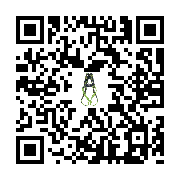
product description:
DuraFlex seat belts use elastic braided belts and have been patented in Europe. Patent No .: 97937154.9.
The braided belt is made of a mixture of polyamide and elastomer, which is highly elastic and stretchable
The seat belt can expand and contract as the user moves, making it more comfortable to wear
At the same time, because the surface is treated with Teflon, the seat belt is more durable.
With back D-ring, webbing loop on chest
characteristic:
Elastic webbing for better comfort and durability
The webbing surface is TEFLON treated, resistant to water, oil, grease and dust
Buckle chest and leg buckles, webbing loop on chest
Meet the standard: GB6095 / EN361
Wear of seat belts
Find the D-ring on the back, pull up the D-ring, and straighten the seat belt. Check the direction of the seat belt, with the shoulder belt up and the leg belt down.
Wear a full body harness like a jacket. Correctly adjust the position of the shoulder belt.
Adjust the seat belt properly and fasten it. Check if they are twisted or tangled. Make sure the buckle is properly fastened.
Fasten your chest belt. Check if they are twisted or tangled. Make sure the buckle is properly fastened.
Adjust the shoulder strap (if the seat belt is adjustable) until it feels comfortable and moderately tight.
Adjust the cross-belt position until you feel comfortable and moderately tight.
Use of seat belts
Before each use of the seat belt, check whether the nylon belt has no cracks, whether the seams are secure, whether there are missing, cracked and rusted metal parts.
To fasten the belt, the belt buckle assembly must be fastened and secured. The safety rope should be hung on the connecting ring for use. The hook and loop of the safety belt should be hung firmly on the mooring point. Sharp-angled components.
The seat belt should be used high and low, and prevent swinging and collision, avoid sharp materials, and do not touch open flames.
When using the seat belt in a low temperature environment, be careful to prevent the seat belt from becoming hard and cracking.
Do not tie the seat belt to prevent the safety rope from disconnecting from the knot when an impact occurs.
Do not use safety belts to transfer heavy objects.
Various parts on the seat belt must not be arbitrarily removed. When replacing new parts, select qualified parts.
The use period of the seat belt is 3-5 years. If abnormality is found, it should be scrapped in advance. In the process of use, also pay attention to check, it should be tested once in six months to one year. It is required that the main parts are not damaged. If any damage or deterioration is found, it should be promptly reflected and discontinued to ensure safe operation. A severely impacted seat belt cannot be used even if its appearance remains unchanged.
Maintenance of seat belts
Safety belts should be stored in a dry and cool place, pay attention to ventilation, mildew and tapeworm, and avoid direct sunlight.
Avoid storing with acids, alkalis, oils and corrosive materials.
Do not store with sharp objects to avoid scratching.
Cleaning fiber and plastic parts: Wash with water (not more than 30 ° C) and neutral soap, and keep away from fire during natural drying.
Cleaning metal parts: Rinse with clean water and air dry.
| Specifications | |
| Brand | Honeywell / Honeywell |
| category | Full body seat belt |
| Configuration | D-ring on back, webbing loop on chest |
| size | M |
Comments